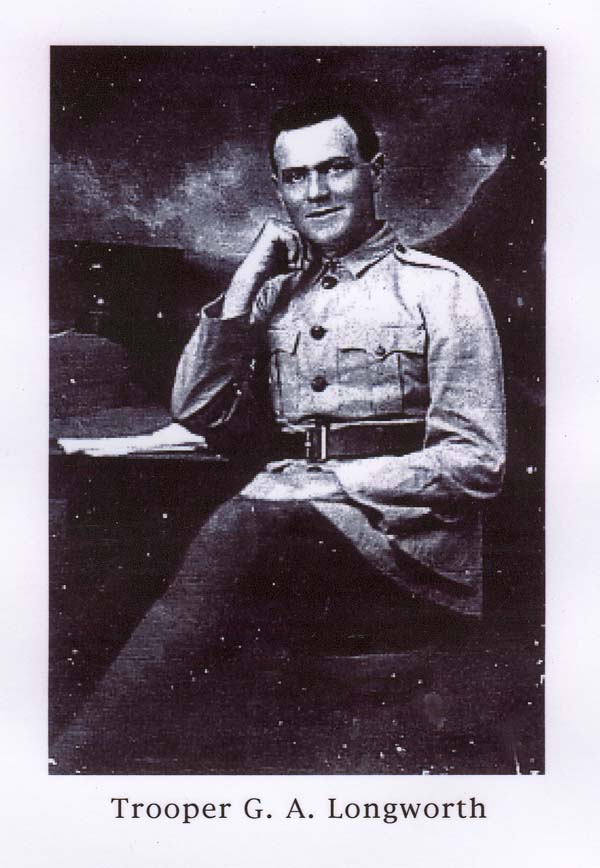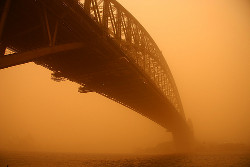LONGWORTH, George Alfred
| NAME | George Alfred LONGWORTH |
| BORN | John’s River, Manning Valley, 18 November 1892 |
| DIED | 113th Australian General Hospital (later Concord Repatriation Hospital) 7 April 1948 |
| MILITARY SERIAL NO. | 952A |
| UNIT | 6th ALH |
| ENLISTED | Liverpool 18 January 1915 |
| DISCHARGED | Sydney 4 May 1919 – Medically unfit. George’s health was permanently damaged by enteric fever and gunshot wounds. |
George Longworth’s story was contributed by State Records Volunteer Arthur Mason. George was Arthur’s uncle by marriage.

George Alfred Longworth - photograph kindly donated by Arthur Mason.
Five Longworth brothers enlisted in World War One. The other four were Hugh, Archibald, Francis and Walter – all survived the war.
Hugh was to become a soldier settler near his brother George on Bulga Plateau Soldier Settlement.
The two brothers decided their future on the turn of a penny. ‘Heads or Tails’ decided whether they would return to the John’s River, or take up land as soldier settlers. The Bulga won’[1]
Life was difficult and hard on the Bulga plateau as evidenced by the following account given by one of the settler’s wives. She also mentions May, the wife of George Longworth as being an expert in nursing, clearly indicating the broad range of skills the wives of soldier settlers were required to have.
The girls did most of the dairying. Dad would call the girls ‘my men’. There was so much work to do. Girls worked in the garden, in the house and did the dairying, also fed the calves and pigs. They dried the apples and the quinces. They husked the corn for the pigs. Each dairying family hand milked 30 to 50 cows twice a day. An experienced worker could milk ten cows per hour. The milking was done before breakfast, which meant getting up at dawn in winter.
The isolation of the Bulga from neighbouring towns made it necessary for women to provide medical care for their menfolk, children and each other. Some of the local women acquired reputations as experts in nursing and home, May Longworth for instance.[2]
Of the eleven settlers who took up block on Bulga Soldier Settlement, George was the last to leave. After his death in 1948, his wife May struggled on the property until 1951, when the family moved into Wingham.
Footnotes
[1] Arthur Mason, Bulga Battlers – A Soldier Settlement Saga, Arthur Mason Publisher, Springwood, 2009, p. 11.
[2] Helen Hannah, The Mountain Speaks: a folk history of the Bulga Plateau, H. Hannah Publisher, Elands, NSW, 1979.
Sources used to compile this entry:
Helen Hannah, The Mountain Speaks: a folk history of the Bulga Plateau, H. Hannah Publisher, Elands, NSW, 1979.
Mason, Arthur, Bulga Battlers – A Soldier Settlement Saga, Arthur Mason Publisher, Springwood, 2009.
State Records NSW: Lands Department; NRS 8058, Returned Soldiers Settlement loan files: Loan file No. 2839 for George Alfred Longworth was located with the Closer Settlement Promotion files, NRS 8052 [10/13313].
National Archives of Australia: B2455, First Australian Imperial Force Personnel Dossiers (George Alfred Longworth) online: http://naa12.naa.gov.au/scripts/imagine.asp?B=8206394&I=1&SE=1
